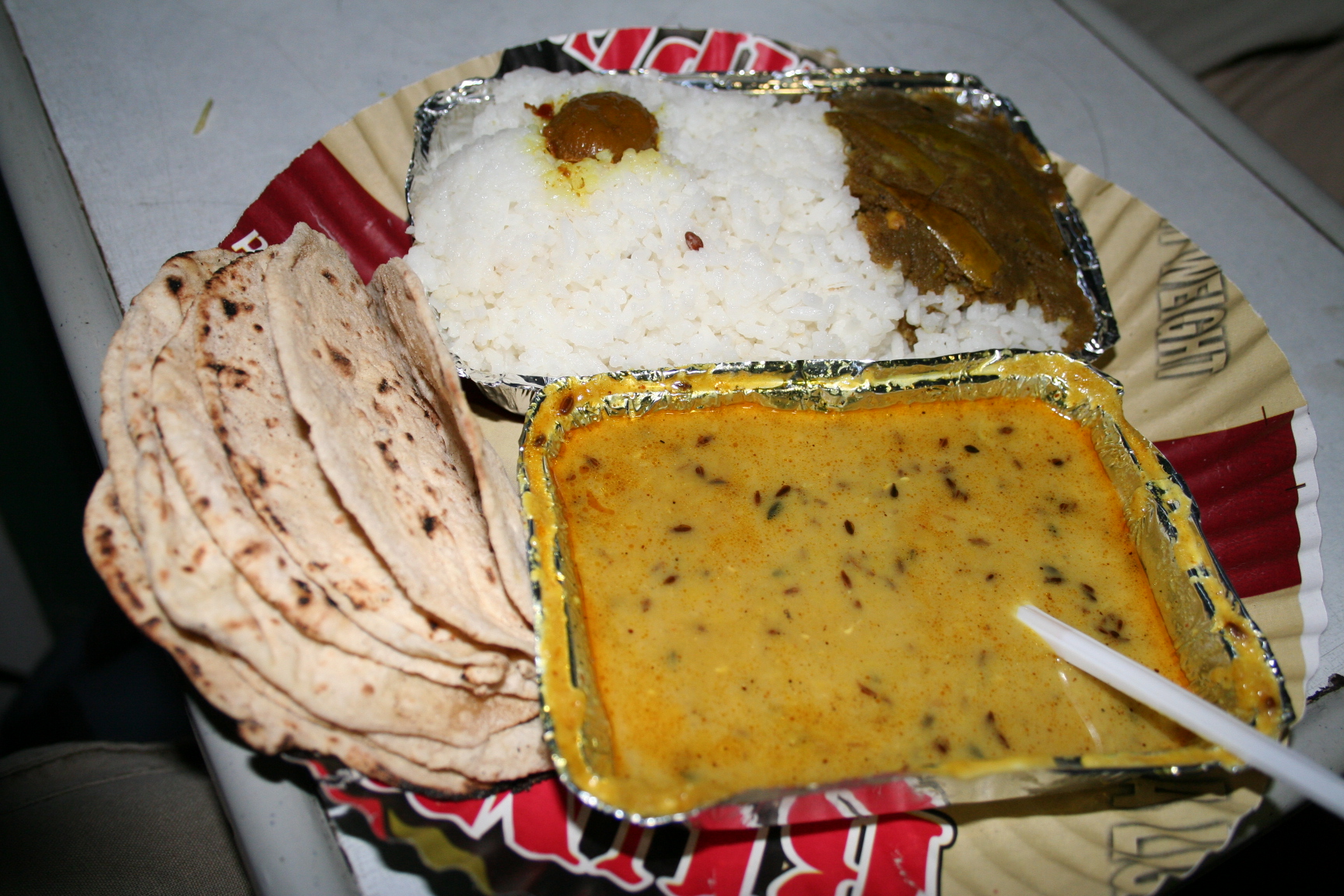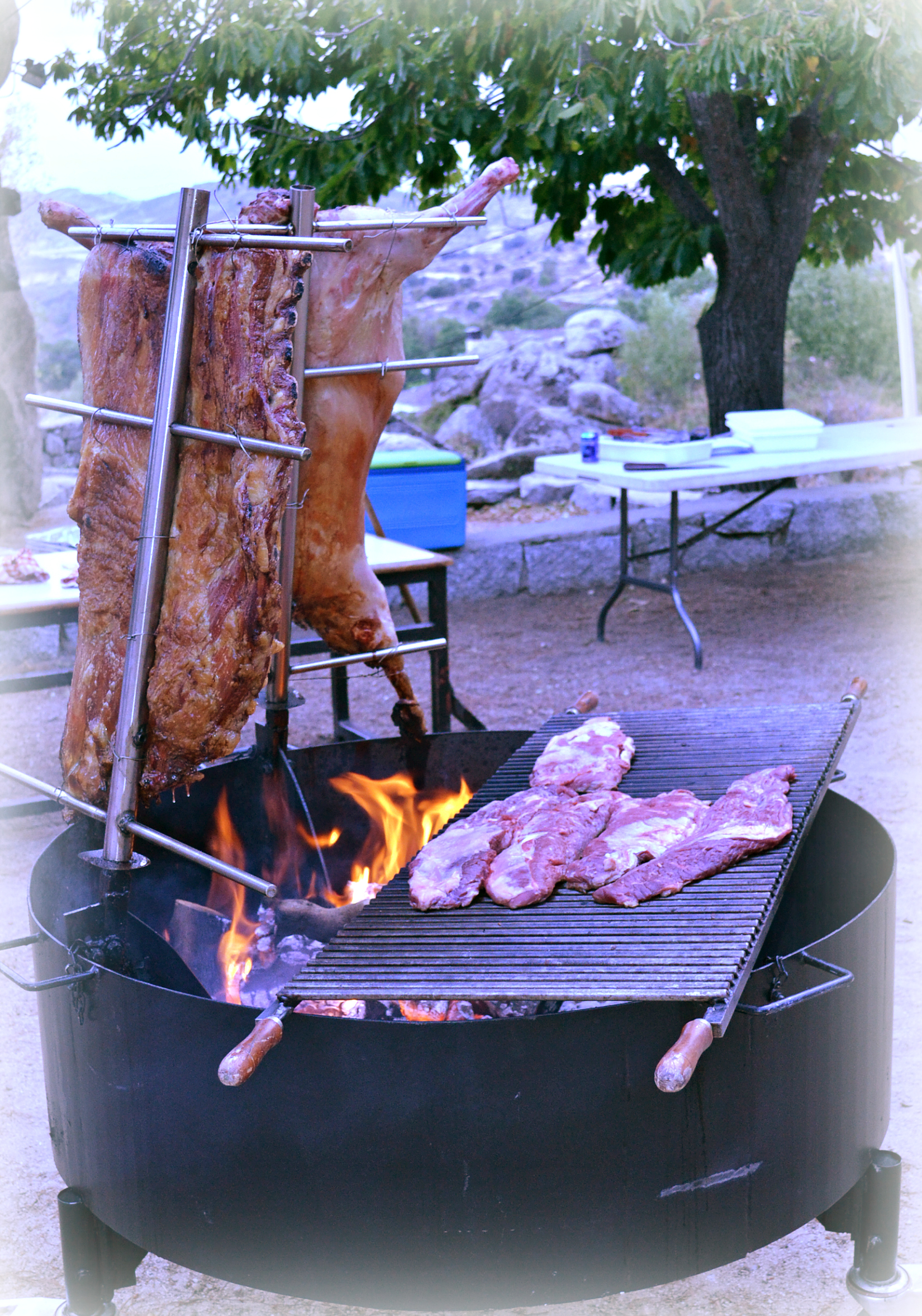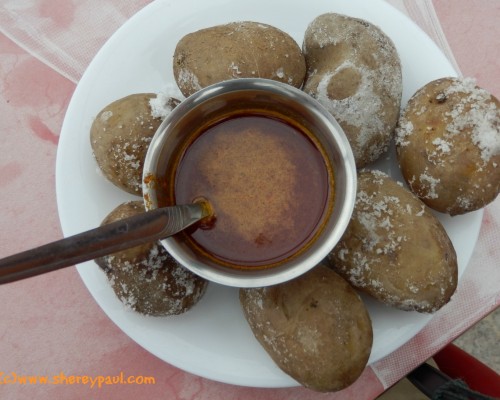
AtoZ: F is for Food
Hoy es el turno de la F de Food (comida). Cuando viajamos nos gusta utilizar los cinco sentidos: vista, oído, olfato, tacto y gusto. El post de hoy trata de descubrir nuevas culturas y países a través de la comida.
Today is the turn of the F for Food. For us travelling is about using the five senses: seeing, hearing, smelling, feeling and tasting. So today the post is about discovering new cultures, and countries through the food.

Con el tiempo hemos ido cambiando nuestra forma de ver la comida local durante un viaje. Al principio éramos nos reprimíamos un poco, pero ahora nos hemos convertido en “turistas hambrientos”. Recuerdo la primera vez que estuve en la India, en el tren nocturno desde Varanasi a Agra (alrededor de 12 horas de viaje) me pedí una cena. La verdad es que fui la única extranjera que lo hizo. El resto echaron mano de las barritas de cereales o no cenaron nada.
With the time we have changed our minds about trying local food while travelling. At the beginning we were a little bit shy or even reticent, but now we have become “hungry tourist”. I remember the first time I was in India, we took a night train from Varanasi to Agra (around 12 hours) and I ordered dinner. Indeed I was the only foreign that did it. Everyone else was eating some cereals bars or nothing.

Tengo que decir que esa era nuestra quinta noche en la India y que todavía estábamos bajo el choque cultural. Siempre se oyen historias horribles sobre gente que se pone enferma por comer algo en la India y la preocupación por la higiene está siempre en tu mente. Sin embargo, la cena que pedí fue barata y no sabía mal.
I have to admit that that was our fifth night in India and it was quite a cultural shock. You know horror stories about people getting very ill from food in India and the worry about hygiene is always in your mind. Nevertheless the dinner I ordered was very cheap and the taste was OK.

Comer como un local significa también comer utilizando una mano (la derecha), con palillos, en hojas de palmera o en un coco. En Camboya comimos pollo al curry en un coco y estaba riquísimo. Estaba muy picante pero en al mismo tiempo dulzón, el coco suavizaba el picante (como si fuese arroz). Quizás me gustó tanto porque me encanta el coco.
Eating like locals means also eating with your (right) hand, with chopsticks, in palm leafs or in a coconut. We loved the chicken in a coconut that we had in Cambodia. It was very spicy but at the same sweet, the coconut made it milder (like the rice) and fresh. Maybe I love it so much because I’m a coconut fan.

La cantidad de comida que te dan en cada país también es diferente. Todavía me acuerdo de Croacia como uno de esos lugares donde puedes pedir un menú para dos, si vas a comer cinco. Te dan muchísima comida, normalmente un montón de carne con un par de verduras.
Also the quantity of food you get in each country is different. I still remember Croatia as one of these places where you can order for two, if you are there with five people. You get so much food: lots of meat and some vegetables.

Por último la forma de cocinar. Cada país tiene su propia manera y cuando lo ves por primera vez, te choca. En Rotorua (Nueva Zelanda) nos prepararon la cena en un hoyo en el suelo, en Sudáfrica tuvimos braai, curry en el desierto en la India, ostras en un restaurante Michelin, … Cuando llegó el momento de elegir el menú de nuestra boda, convencí a Paul para hacer algo diferente. Muchos de nuestros amigos vinieron de fuera de España a Madrid para la boda, así que queríamos algo que la gente no olvidase, pero al mismo tiempo que nos gustase. Tuvimos ternera y cordero a la cruz: la carne se pone cuelga encima de una hoguera durante unas cuatro horas. Es como una barbacoa, pero con la diferencia de que la carne no se corta. Creo que fue choque cultural para algunos 🙂
Last but not least the way of cooking. Every country has its own way and when you see it for the first time it seems just weird. We had a meal cooked in a whole in Rotorua (NZ), braai in South Africa, curries in the desert in India, oysters in a Michelin restaurant, … When it was the time to choose the menu for our wedding, I convinced Paul to have something different. Many friends from outside Spain came to Madrid for the wedding, so we wanted to have something people won’t forget, but at the same time something we like. We had beef and lamb “a la cruz”: the meat is cooked on a open fire for around four hours. It’s like a bbq but with the difference that the meat is not cut. I think it was kind of a culture shock for some people 🙂

¿Qué es lo más raro que has comida?
What is the weirdest thing you have ever eaten?






3 Comments
Aaron Brinker
Great question and great post for the A to Z challenge. It is a topic I truly love – Food!
The strangest things i have ever had the opportunity to try are rattle snake, alligator and buffalo (not necessarily in that order). In general, I don’t mind trying new foods, but I am certain there are many dishes in the world I would never try…lol
Aaron Brinker aka DadBlunders
shere
Hi Aaaron,
I heard alligator tastes like chicken, I had the opportunity to try it but at that moment I didn’t feel like it. One of my favorite “exotic” meet is kangaroo.
shere
I’m going to Paris next week and a friend already told me not to eat andouillette, also one of this things that are not so nice for “outsiders” 🙂